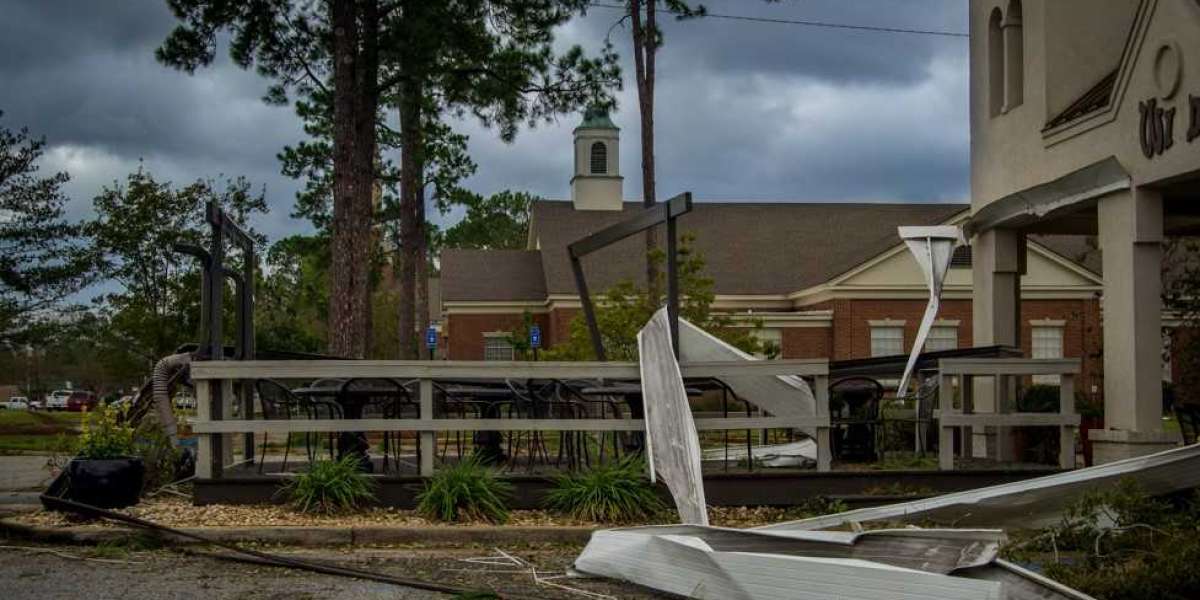In anticipation of the upcoming hurricane season, it is crucial to prioritize preparation measures. While individuals typically focus on acquiring supplies, installing shutters, and obtaining generators, our responsibility lies in training debris monitors who will oversee the clearance of roads in the aftermath of storms. These dedicated professionals are entrusted with documenting and ensuring the safe disposal of construction debris while strictly adhering to government standards.
Efficient Disposal of Storm Debris: A Step-by-Step Guide
Prompt and safe removal of waste following a storm is of paramount importance. The timely removal of debris plays a critical role in facilitating the resumption of regular services. To ensure a seamless process for homeowners, we offer the following step-by-step guidelines:
1. Sorting Waste:
Distinguish between regular household trash and storm debris. Treat food waste and recyclables as usual, following established disposal practices. Storm debris includes wind-damaged tree limbs, appliances, carpeting, and furniture. Separate piles of these items should be placed at the curb for collection.
Proper sorting of waste not only facilitates safe and efficient collection but also helps prevent potential health hazards and unpleasant odors that could adversely affect you, your family, and the entire neighborhood. By correctly sorting your waste, you enable other organizations to effectively collect storm debris in accordance with arrangements made with FEMA or your local city/county authorities.
2. Pre-Hurricane Season Maintenance:
Between December and April, undertake necessary maintenance to prepare for the upcoming hurricane season, which officially begins on June 1. This maintenance may involve cutting down large vegetation or removing trees. If engaging contractors for tree removal or other major work, ensure they include debris clearance costs in their services.
If you choose to handle the maintenance yourself, be sure to trim weak branches and thin foliage to minimize the risk of uprooted plants. In most cases, vegetation piles smaller than 6 cubic yards can be collected on your regular waste collection day. However, it's important to verify the regulations in your locality, as not all municipalities provide vegetation collection services. Some areas may have designated collection days or engage private companies for this purpose.
Additionally, consider removing any yard items that could potentially become hazards during hurricane-strength winds. Eliminate large items such as broken lawn furniture and old lumber well in advance of the hurricane season.
3. Preparing for Impending Storms:
Exercise caution during the time when a storm has been named or your area is on watch or under warning. Avoid engaging in any construction work or tree cutting during this period.
Insufficient personnel to manage the additional storm-related waste can strain the collection system and disposal processes. Furthermore, engaging in such activities poses risks to your personal safety and that of your neighbors. To ensure the safety of employees, many facilities suspend services and close early to allow sufficient time for employees to return home or evacuate.
4. Post-Storm Procedures:
As mentioned earlier, exercise patience and maintain proper waste separation after a storm. Place household waste in secure plastic bags and only leave them outside on your designated waste collection day. Avoid placing debris near fences or any powerline equipment, as well as transformers, poles, or downed electrical wires.
After specialized equipment has completed the collection of storm debris, you may need to repair any damaged swales on your property. Being prepared for post-storm challenges facilitates a swift restoration of normal routines for cleanup crews and allows us to efficiently address the aftermath of the disaster.
Following a storm, regular updates regarding debris collection progress will be provided. Generally, priority is given to the collection of regular garbage and food waste by the city. In extreme situations, the collection of storm debris may take up to six weeks. Initially, clean vegetation will be collected, with construction debris and mixed waste collected subsequently.
Trucks typically adhere to their scheduled routes and are not diverted to remove debris first, as the entire process can be impacted. Temporary debris sites, equipped with specialized equipment, are established to manage and collect storm debris effectively.
Proper Disposal of Storm Debris
To ensure the effective disposal of storm debris, carefully sort various items into separate piles after a hurricane or tropical storm. Categorize the waste as follows:
1. Household Waste
2. Vegetative Debris: Logs, plants, leaves, limbs, etc.
3. Construction Debris: Lumber, plumbing, drywall, sheetrock, bricks, insulation, plaster, etc.
4. White Goods: Includes washers, dryers, water heaters, dishwashers, air conditioners, and other major appliances.
5. Electronics: Corded devices such as computers, radios, and televisions.
6. Hazardous Household Waste: Batteries, cleaners, oils, pesticides, paints, and lawn chemicals.
- Place household chemicals in sealed containers to prevent environmental or health risks, ensuring proper labeling before disposal.
- Empty refrigerators and freezers of all liquids and foods before disposal. Whenever possible, consider donating them to ReStores or thrift stores, verifying their acceptance policies in advance.
- Recycling centers accept used laptops, computers, electronic equipment, batteries, cleaning supplies, paints, solvents, etc. Take advantage of Household Hazardous Materials Collection Days whenever available.
Burning household waste openly is both illegal and hazardous. Refer to the local disaster and debris management websites for detailed information on managing debris after a hurricane.
Storm Debris Management
Temporary storage areas, approved by local governments before a storm, are established to handle the large volumes of debris generated following a storm. Stay informed through local news sources to discover the location of these sites. Familiarize yourself with local regulations regarding prohibited items in landfills to ensure appropriate disposal methods.
Collaboration with FEMA and Debris Removal Pay Rate:
For information on storm cleanup and preparation, contact your local FEMA Chapter. The agency provides valuable alerts regarding active systems and guidance on storm debris management.
Cleaning Tips After a Storm
After a storm, gather all yard trimmings, including leaves, branches, brush, and other debris. Dispose of organic waste in designated bins or carts to the maximum extent possible. Paper yard bags may be utilized for any excess that does not fit in the carts, while the use of plastic bags for yard trimmings is prohibited.
Branches up to 2 inches in width can be bundled, provided they weigh less than 50lbs and measure shorter than 4 feet. When disposing of lumber and wood, remove screws or nails whenever feasible. In cases where removal is not possible, flatten the nails with a hammer. Bundle the lumber and wood, ensuring they weigh less than 50lbs and are no longer than 4 feet.
Miscellaneous storm debris, apart from items suitable for recycling or composting, can be placed in carts designated for regular trash collection. In case of lost carts during a storm, consult with neighbors to arrange appropriate disposal options.
Efficient Construction Debris Disposal
When facing a potential storm threat in your area and requiring prompt disposal of construction debris, Roll off dumpster rental Truro MA offer convenient roll off dumpster services. Contact us to facilitate the safe and efficient removal of construction debris.
Effective construction debris disposal services are vital for managing waste after a storm or natural disaster. By adhering to established procedures, promptly sorting waste, and engaging with professional disposal services, individuals can contribute to the restoration and safety of their communities. Together, we can efficiently manage storm debris, promote environmental responsibility, and facilitate the quick recovery of affected areas. Read more here!



